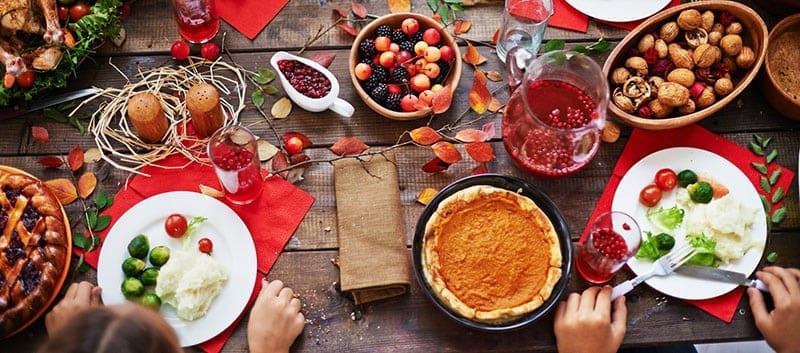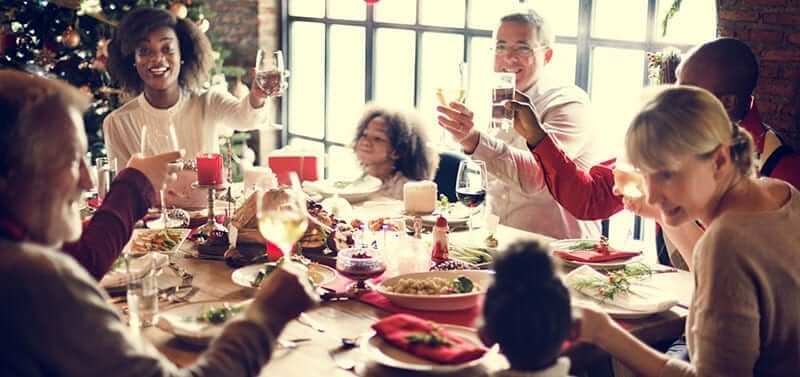We generally request a 4-6 week follow-up appointment after the initial diabetes management 1-on-1 consultation to help patients stay focused and on track. Since it is mid-December we tried to have the patients return in late January for that next visit. Almost every patient declined the appointment which was offered. The responses were all very similar, “give me time to get back on track after the holidays and I will come see you in February.” Unfortunately, this is not the best way to get on board with diabetes management. This indicates they are already planning on “being bad” before they can focus on “being good” again in the New Year. One of my patients said, “I don’t want the nurse/dietitian yelling at me for gaining weight during the holiday.” First of all, we as educators never “yell” at patients since it is purely their own decision on how to handle their diabetes once they leave the office. We are there to educate and guide not be the bad guy, mother figure or policeman. The reason we offer appointments between the holidays is to help them stay motivated, focused and on track to control diabetes and blood sugars more than anything else. Let’s look at some strategies I often recommend to my patients with diabetes at this joyous time of the year:
Remember What Really Matters During the Holidays.
Try to focus on the family connection /interaction and catching up with your loved ones. Appreciate the talk around the table, visiting with friends and family, confiding in that special uncle, playing with the grandchildren and don’t let the meal take over the entire season. Think about focusing on the social aspect of friends and family more than the actual food.
Eat “Normally” Prior to the Event
There is a very common practice of skipping food the entire day to “save up calories” for the big celebratory meal. It does not work that way, especially when you have diabetes. With diabetes, you can’t process large amounts of glucose, all carbohydrates, at one sitting. Eating too many carbohydrates at one sitting guarantees elevated blood sugars to follow. Try to eat normally throughout the day. If you eat your holiday meal during lunch time, then eat a regular breakfast containing protein and high-fiber carbohydrates that morning. Have an egg sandwich on multi-grain toast with a big glass of water. Plan on eating 4-5 hours later. When the holiday meal rolls around at 1:00-2:00PM, you will not be ravenous and will start and proceed with more self-control. If you celebrate with the holiday meal in the evening, include a small breakfast and lunch prior to the get together. Anytime you go hungry to a gathering you set yourself up for big trouble. This makes you want to overeat and ends up making your blood sugars soar. Include a healthy fat, a small serving of fiber and a protein and your blood sugars and mood will thank you later in the day. You will be calmer, more in control and feel satiated.
Start the Day With Some Exercise
After breakfast, try to get in your daily walk or 30 minutes of any aerobic movement to help your blood sugars from elevating for up to 24 hours. Rake leaves, blow or shovel snow, mow the lawn, chop wood, watch an exercise video or go to a morning exercise class. Any time you move it will help your insulin sensitivity increase. If you are going out of town to celebrate, find a motel/hotel that offers a gym at the facility. In-house gyms are much easier to find. If your hotel does not have one, look for a local gym since they charge a minimal fee for a 1-2 day pass. Even 10-minute intervals of walking every hour before the event will lower blood sugars.
Hydration

Pre-game Snack
If your party is late in the day, include a small snack about one hour before leaving in addition to your earlier small meals. Back to the basics: eat a high-fiber cracker with a cheese stick or a half of an apple smeared with a teaspoon of almond butter. This helps curb your appetite and slows the absorption of sugar.
Scope the Room
You have arrived at your holiday destination and before diving into the appetizers and finger foods, check out the entire room from the buffet table to the roaming trays of tiny, tasty treats. Know your options before you make a commitment to your plate. Get an idea about the main meal by checking with the host/hostess or wandering into the kitchen. Try to stick to the simplest, most identifiable, one ingredient appetizers when possible. This includes the crudité tray of fresh cut up vegetables, roasted nuts, hummus dip or low-fat cheese cubes in moderation. Try to avoid any finger foods dripping in sauce, butter or cream. Look at it as easier to eat without making a total mess on your party clothing. Avoid having two hands free by carrying a clutch bag, a cloth napkin or hold a fancy drinking glass so you can only carry a minimal amount of food. When you make your choices, take a small plate to place appetizers on instead of grabbing as you go. This holds you more accountable for food selections and amounts because it is visible.
Alcohol
“Party time” is incomplete for some people unless alcohol is on the menu. If you do not drink, there is no need to start drinking just because it is the holiday season. If you do drink alcohol, you should drink “mindfully” just as you eat. Try to make wise choices. Instead of Egg Nog which is full of saturated fat, sugar and calories or mulled wine which is high in sugar and calories, try a light beer, dry wine or vodka on the rocks. Stay away from the fruit punch, fancy drinks made with simple syrup (sugar) or rum runners, exotic fresh fruit juices (sugar) and keep it simple. Regular tonic water is full of sugar so mix drinks with club soda or diet tonic water instead. If you plan on more than one alcoholic beverage during the function, substitute a glass of water or sparkling water with a citrus slice in a crystal cut glass between drinks. This way you can pace yourself and nobody needs to know you are drinking plain water. Drinking without food can cause hypoglycemia or low blood sugar, so be careful. Alcohol is empty calories which add up quickly and can promote holiday weight gain. Weight gain, whether from food or drink, ultimately makes it more difficult on your pancreas which causes insulin resistance and ultimately raises blood sugars. Make a drinking plan before you go. Knowing what you will drink and how much you will have gives you a better chance if you have a plan in place.
The Main Event

Be Ready for the Splurge
Be realistic. Most people find this time of the year special for many reasons including the food. The host or hostess may be insulted if you avoid the delicious selections since so much time went into preparation. Set up priorities before making the splurge decision. All carbohydrates turn to glucose whether it is bread, potatoes, noodles, stuffing, candy or desserts. Understand if you want to eat pie and a brownie this time, eat less bread, rice or stuffing. Choose the homemade delicacies over the boxed store bought cookies. Indulge in the food you have been dreaming about and craving all year, if you have to, as long as you take a small sliver or bite. Try to pick three choices of desserts to taste, take your time to make the decision and do not go back to taste the other five.
Be Understanding to Yourself
Ok, so after all the strategies given, you still blew it at that holiday experience. Do not beat yourself up. Be kind and admit you are human. Concentrate on all the things you did right that day such as walking, avoiding the fried turkey and eating the roasted turkey without skin or drinking more water. Learn from this event and try not to let this become a pattern or give yourself permission to blow it all through the entire holiday season. Don’t let or make others become your security guard or policeman by being responsible for your individual behavior. Realize the people around you love you and want you to succeed but need to back away and let you take charge. Guaranteed, you most likely will not be the only person at the function with diabetes. See if you can bond together with them and support each other with better food decisions.
Walk After You Eat

The Next Day
No matter what happened the day before, try to get back on track as soon as possible. Return to your regular workouts, drink water to reduce bloating, eat smart and scale back. Include fiber, healthy fat, protein and foods high in potassium to help rid the body of sodium from the day before. Follow the motto “each day is a new day.”
Start the holiday season off on a mission to get and stay healthy instead of waiting until after. That way when the new year starts, you will have a lower A1C and be in control of your diabetes both physically and mentally. You won’t have to write down too many New Year’s resolutions!
Have a question or comment? Post below or email me at RKleinman@adwdiabetes.com if you would like to share them with ADW diabetes.
NOTE: Consult your Doctor first to make sure my recommendations fit your special health needs.







Leave A Comment